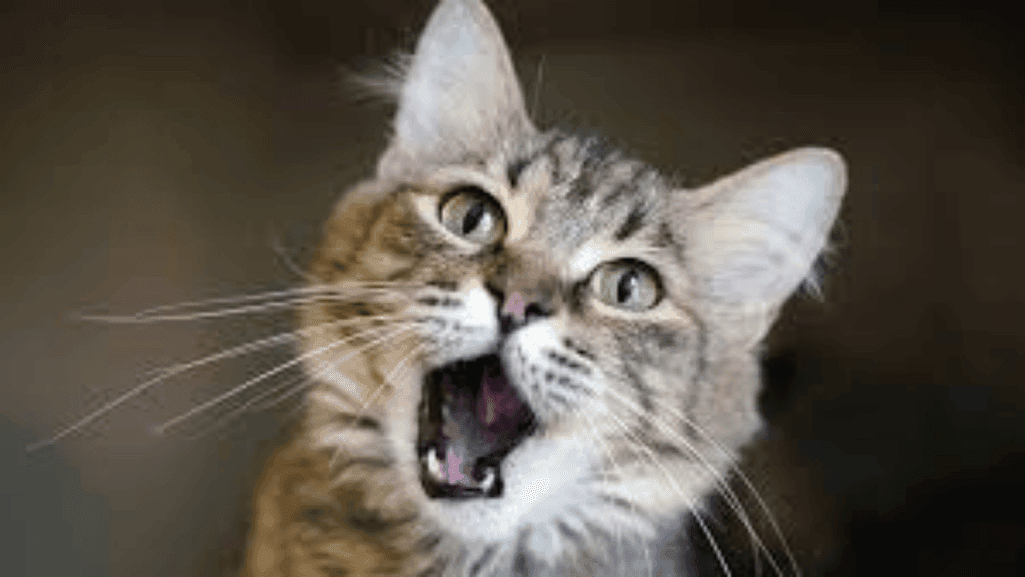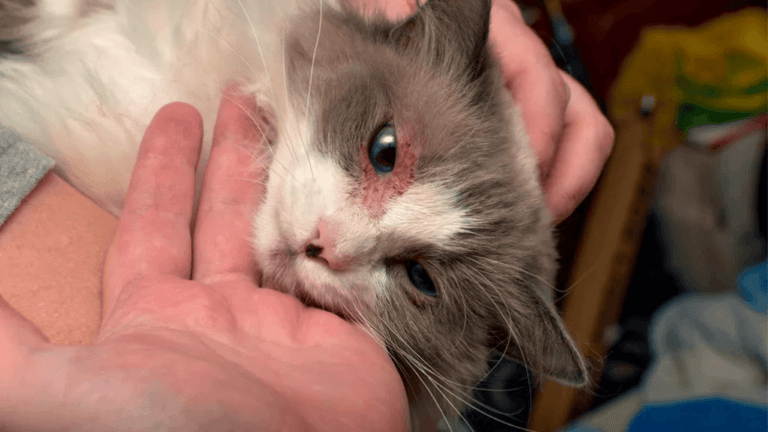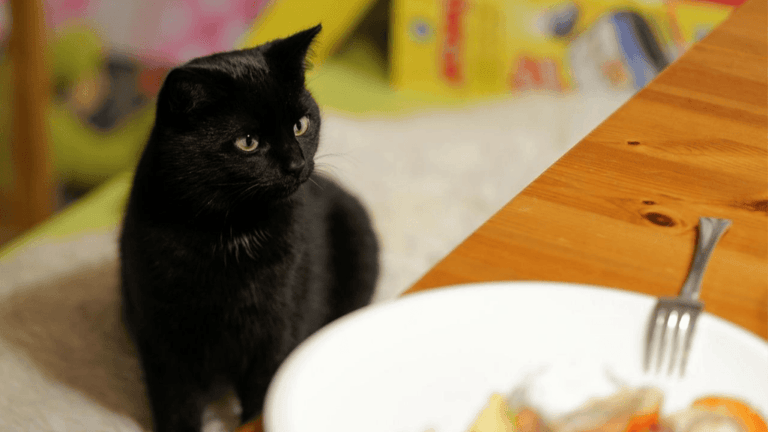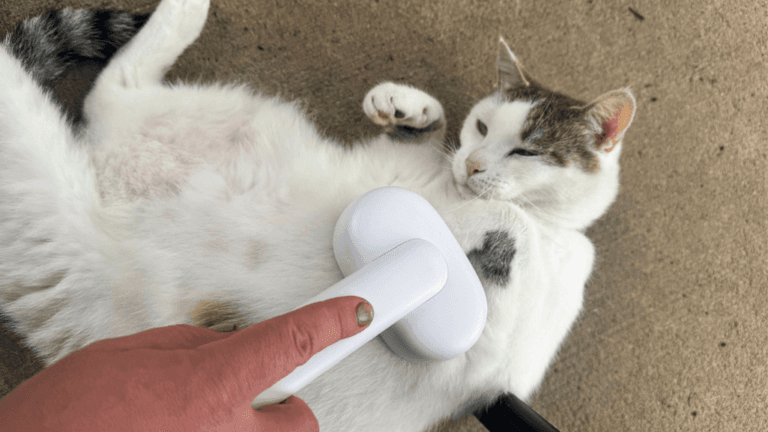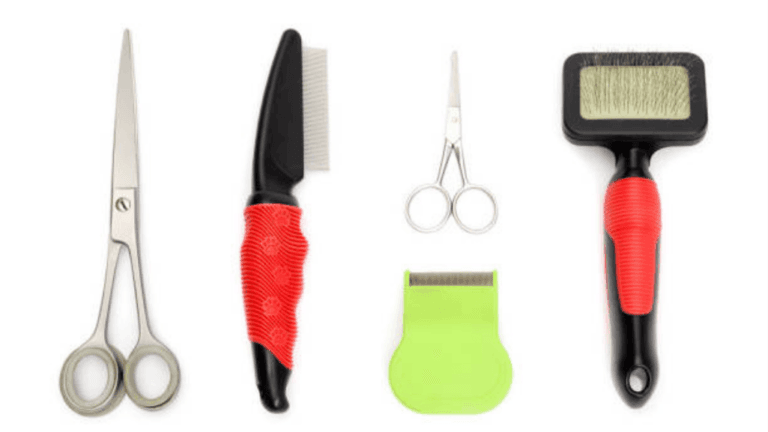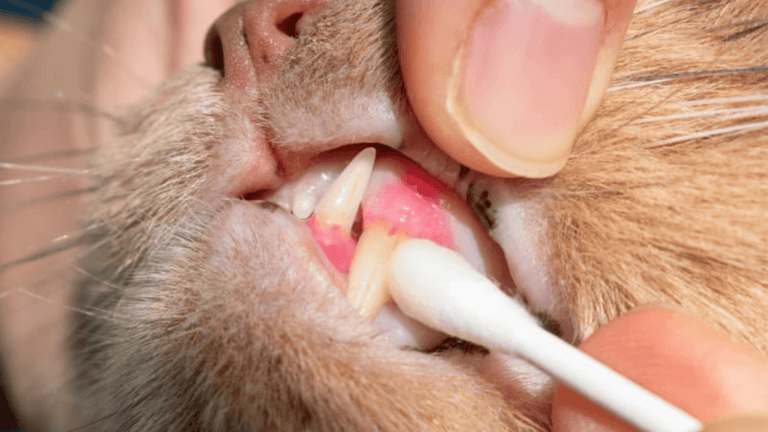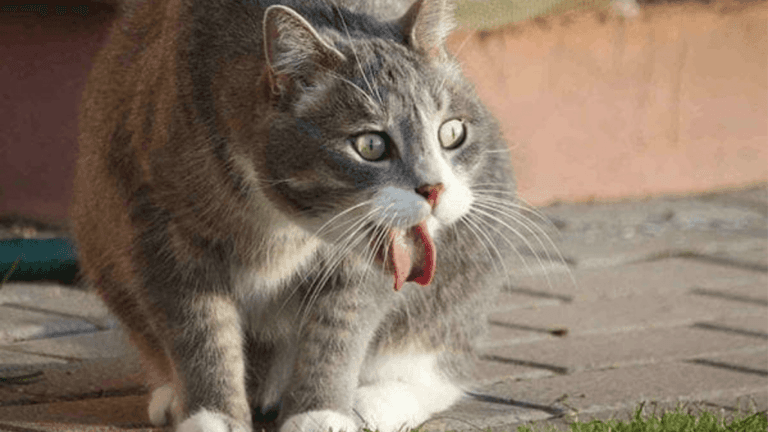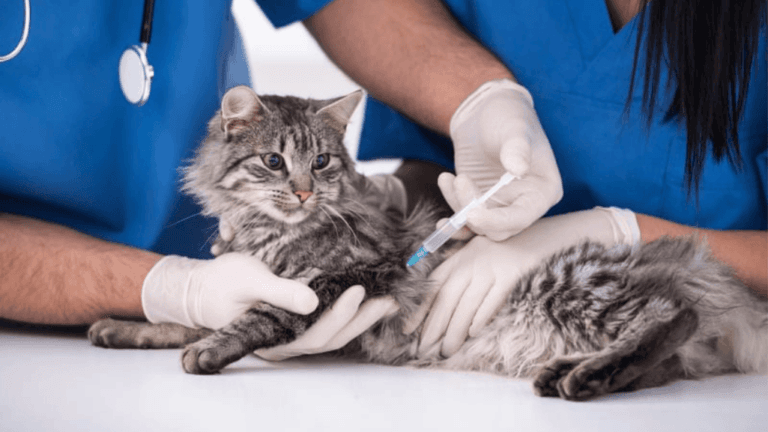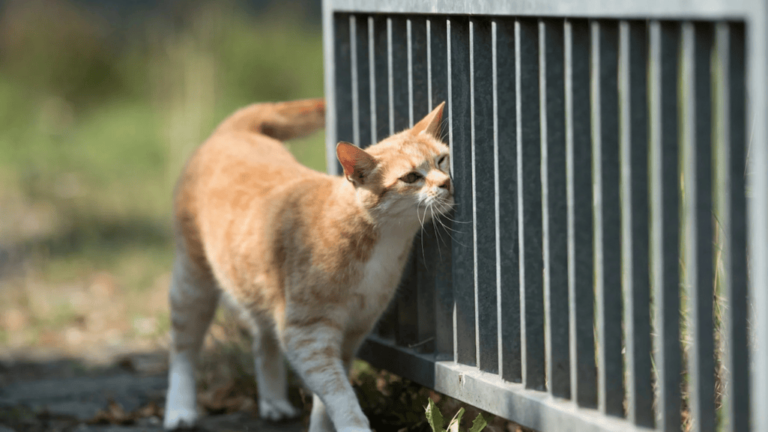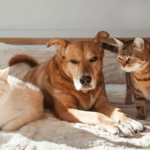As a cat owner, knowing about your cat’s dental health is key. This includes their cat molars. These teeth are vital for your cat’s health. Ignoring their dental care can cause pain and health problems.
Learning about feline dental anatomy, common dental issues, and how to care for their teeth is important. This knowledge helps keep your cat’s smile healthy and happy for years.
Cats have 30 adult teeth, with four molars for grinding food. Their molars and carnassial teeth help them tear and chew meat. Regular dental visits, at-home care, and watching for dental problems are vital for your cat’s health.
Did you know 50-90% of cats over 4 years old have dental disease? Tooth infections are a top reason for vet visits. Plaque on their teeth can cause gingivitis, periodontal disease, and other serious problems. Knowing about feline dental health and caring for their teeth can prevent these issues and improve your cat’s life.
Key Takeaways
- Cats have 30 adult teeth, including four molars critical for dental health
- Regular dental check-ups, at-home care, and monitoring are essential for maintaining feline dental health
- 50-90% of cats older than 4 years suffer from some form of dental disease
- Plaque buildup can lead to gingivitis, periodontal disease, and other severe oral health problems in cats
- Prevention through regular plaque removal, dental products, supplements, and veterinary recommendations is key
Feline Dental Anatomy: A Closer Look at Cat Molars
Understanding feline dental anatomy is key to your cat’s health. Cats have 30 permanent teeth, with molars being vital for chewing and digestion. Let’s explore the structure and function of cat molars.
The Structure and Function of Cat Molars
Cat molars are at the back of the mouth, made for crushing food. They have sharp cusps and ridges for breaking down meat and bones. This design is perfect for their carnivorous diet and hunting skills.
Carnassial Teeth: The Unique Molars of Cats
Cats have a special pair of molars called carnassial teeth. These are in the upper and lower jaws and are for shearing meat. They work like scissors, helping cats slice through prey’s tough parts.
“Cats have four large canine teeth to puncture, rip, and tear apart food or prey.”
Premolars and Molar Cusps in Cats
Cats also have premolars, between their canines and molars. These teeth have sharp cusps for chewing. The cusps on premolars and molars work together, helping cats grind their food well.
Dental problems are common in cats, with 90% of cats over the age of 4 suffering from dental problems. Regular dental care is vital for your cat’s health. It helps prevent issues like periodontal disease and feline odontoclastic resorptive lesions (FORL).
The Evolution of Cat Teeth: From Wild Predators to Domestic Companions
Cats are true carnivores with teeth made for hunting. Over millions of years, their teeth changed to hunt, kill, and eat prey well. Knowing how cat teeth evolved helps us understand their dental needs and health today.
Cats have 30 teeth, with fewer premolars and molars than other mammals. This is typical of carnivores, making their bite more efficient. Their incisors are small and chisel-like, and their canines are long and sharp for catching prey.
Feline premolars are sharp for cutting meat, and sometimes there’s no upper premolar. The lower molar is long and sharp, while the upper molar is simple. This setup, known as carnassial teeth, helps cats slice through tough meat and sinew.
“Cats, within the Felidae family, have evolved as solitary hunters with great agility and keen senses.” – Feline Evolution Expert
The cat family’s history goes back to the Late Eocene Epoch, about 37 million years ago. The earliest cat fossils are from 29 million years ago. Today, there are 37 species in 18 genera, found almost everywhere except Antarctica and Australia.
As cats became domestic pets, their diet and lifestyle changed. But their teeth and body stayed true to their wild roots. Knowing about cat tooth evolution helps us care for their dental health and nutrition at home.
Common Dental Issues Affecting Cat Molars
Cats are known for their clean grooming, but their molars can face dental problems. More than half of cats over three have dental disease. Issues like periodontal disease, tooth resorption, and trauma can cause pain and infections if not treated.
Periodontal Disease and Its Impact on Cat Molars
Periodontal disease is a common dental issue in cats. It affects the tissues around the teeth and is seen in 70% of cats by age three. It’s caused by plaque and tartar buildup, leading to gingivitis and tooth loss if not treated.
Regular dental check-ups and at-home care can help manage this disease.
Tooth Resorption and Feline Odontoclastic Resorptive Lesions (FORL)
Tooth resorption, or FORL, affects up to three-quarters of older cats. It destroys the tooth structure, often needing surgery. Symptoms include eating problems, excessive drooling, and visible lesions.
Trauma and Broken Teeth in Cats
Cats’ curiosity can lead to dental trauma. Broken teeth expose the pulp, causing pain and infection risk. The severity of the fracture determines the needed care, which should be prompt to avoid abscesses or infections.
Other issues include feline stomatitis, oral cancer, and dental infections. Early detection and treatment are key to your cat’s health. Regular dental care can help keep your cat’s teeth healthy and strong.
Symptoms of Molar Problems in Cats
As a cat owner, knowing the signs of cat dental problems is key. Catching issues early can stop them from getting worse. By age 4, 50% to 90% of cats show dental disease signs. So, it’s important to check your cat’s teeth often.
Dental pain in cats might not be obvious. But, changes in eating and behavior can hint at molar issues:
- Less interest in dry food
- Drooling
- Pawing at the mouth
- Not wanting to eat or dropping food
- Choosing soft foods over hard ones
Visible Signs of Dental Disease
Look out for these signs of dental disease too:
- Bad breath in cats (halitosis)
- Red, swollen, or inflamed gums (cat gum inflammation)
- Visible tartar on teeth
- Excessive cat drooling
- Teeth that are dark or discolored
- Resorptive lesions or gaps in teeth
Preventing dental pain in cats starts with regular dental care. This includes home care and vet visits.
If you see any cat molar symptoms, get a vet appointment. They can do a full dental check. The only way to fix dental pain is with a vet’s help, often through COHAT.
Maintaining Your Cat’s Molar Health: Prevention and Care
Keeping your cat’s molars clean is key to their health. 70% of cats develop periodontal disease by the time they are three years old. Plaque and bacteria on their teeth can cause inflammation and gingivitis. If not treated, this can lead to periodontitis.
Regular dental check-ups and cleanings are a must. Your vet can check your cat’s teeth and fix any problems early. Professional cleanings remove plaque and tartar, helping keep your cat’s teeth healthy. This is important for cat dental hygiene.
At-Home Dental Care for Cats
At-home care is also important for your cat’s molars. Brushing their teeth daily or every other day is best. Start early and brush regularly to prevent plaque and tartar. Use cat-specific toothpaste and a soft-bristled toothbrush.
Oral rinses with chlorhexidine can also help. They reduce bacteria in the mouth when used with brushing.
“Proper technique and tools are key for effective brushing of a cat’s teeth.”
Dental Diets and Treats for Optimal Molar Health
What your cat eats affects their teeth. Soft, wet foods might not clean teeth well, but dry foods can be abrasive. Yet, dry foods’ long-term effect on dental health is unclear.
Dental diets and treats, like Greenies Feline Adult Dental Cat Treats, can help. Look for products with the Veterinary Oral Health Council’s (VOHC) seal. This means they are effective for dental health.
Cats often hide their pain, so watch their oral health closely. Annual vet visits, daily brushing, and dental diets and treats are key. They help keep your cat’s molars and overall health in top shape.
Cat Molars: Veterinary Treatments and Procedures
When cat molars are badly damaged or infected, a vet may need to step in. This is to ease pain and stop things from getting worse. Veterinary dentistry for cats includes treatments for dental problems like gum disease and tooth decay.
Tooth extraction is a common dental procedure for cats. The American Animal Hospital Association (AAHA) says it’s needed for severe gum disease and other issues. Removing a cat’s molar is a precise task that only a vet can do right.
Vets might choose other treatments to save a tooth, like root canals. These complex procedures help keep the tooth but remove infection. Regular dental cleanings under anesthesia are also key for cat molar health.
“Preanesthetic blood tests are conducted to ensure satisfactory kidney and liver function for anesthesia. Professional dental evaluation for cats requires general anesthesia to allow for a thorough examination.”
After dental cleanings, a good home dental care routine is vital. Use pet toothpaste, not human toothpaste, for your cat’s teeth. The Veterinary Oral Health Council (VOHC) only approves products that have been scientifically proven to work.
Regular vet visits, cleanings, and home care can prevent the need for more serious treatments. Catching dental problems early is important for your cat’s health and happiness.
The Importance of Monitoring Your Cat’s Molar Health
As a responsible cat owner, it’s key to focus on your cat’s dental health, mainly their molars. Regular checks and catching dental problems early can greatly improve your cat’s life and health.
Dental disease is common in cats, getting worse with age. Over a third of cats will get Feline Resorptive Lesions (FORLs) at some point. These painful spots can cause tooth loss and pain if not treated. Watching your cat’s molar health closely can help find these problems early and get them treated fast.
Early Detection and Intervention
Regular mouth checks and knowing the signs can help spot dental issues early. Look out for:
- Bad breath
- Difficulty eating or changes in eating habits
- Excessive drooling
- Pawing at the mouth or face
- Visible tartar buildup or discoloration on the teeth
If you see any of these signs, see your vet right away. Early action can stop dental disease from getting worse, ease pain, and save your cat from expensive treatments later.
The Link Between Dental Health and Overall Well-being
Your cat’s dental health is more than just a pretty smile. It’s linked to their overall health. Dental infections can spread and cause big health problems. For example, gingivitis, caused by tartar and infections, can turn into periodontitis, leading to tooth loss and health issues.
Prevention is key for your cat’s molar health. Regular dental checks, home care, and a balanced diet can keep their teeth and gums healthy.
By focusing on your cat’s molar health with early detection and prevention, you can ensure their well-being and long life. Remember, a healthy mouth means a happy cat!
Conclusion
Knowing about cat molar health is key for cat owners. Learning about your cat’s teeth, like the 10 premolars and four molars, helps you see their importance. These teeth are vital for hunting, tearing meat, and chewing food.
Dental problems like periodontal disease and tooth resorption can harm your cat’s life quality. To keep their teeth healthy, brush their teeth at home and give them dental diets. Also, don’t forget to take them for vet check-ups and dental cleanings.
Watching your cat’s molar health closely can help catch problems early. This way, you can avoid bigger issues. Remember, your cat’s dental health affects their overall well-being. By focusing on preventive care, you can help your cat live a happy, pain-free life.




